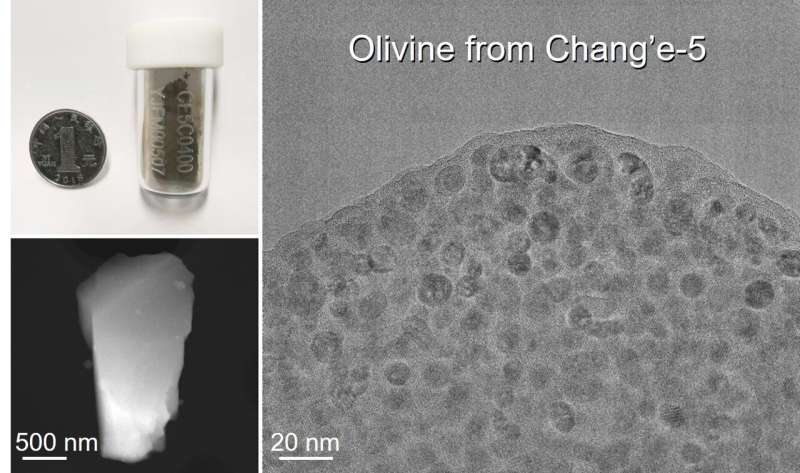Surface microstructures of lunar soil reveal an intermediate stage in space weathering process

A study conducted by a joint team from Chinese Academy of Sciences used aberration-corrected transmission electron microscopy (TEM), Electron-energy loss spectroscopy (EELS) and scanning transmission electron microscopy (STEM) to examine the microstructures and chemical compositions at nano/atomic scales of 25 soil grains (1-3 μm in size) from lunar sample CE5C0400YJFM00507 (1.5 g).
The soil mainly includes the minerals olivine, pyroxene, anorthite and glass beads. To avoid possible chemical contamination and ion-bombing-induced amorphization, the team did not employ the focused ion beam (FIB) to cut the bulk samples except for the glass bead.
First, they unambiguously identified the wüstite FeO nanoparticles instead of npFe0 that are embedded in amorphous SixOy rims outside the olivine grains. This unique rim structure has not been reported for any other lunar, terrestrial, Martian, or meteorite samples so far.
Given that the nano-phase Fe is the final product of decomposing olivine Fe2SiO4, they suggest that wüstite FeO may serve as an intermediate state of the thermal decomposition process, and then the FeO may further transform into nano-phase Fe in the presence of cosmic radiation or solar flares.
For pyroxene and anorthite, the chemical compositions of surface areas are identical to interior parts, and there is no SixOy rim outside sample. Meanwhile, no foreign volatile elements deposition layer and solar flare tracks can be found on the surface or inside the olivine and other minerals.
Such findings imply that the studied samples do not undergo severe space weathering, and the underlying mechanism deserves further investigation. They provide clues or constraints on the incipient formation mechanism of rim structure under space weathering.
The research was published in Science Bulletin.
More information: Jian-Gang Guo et al, Surface microstructures of lunar soil returned by Chang'e-5 mission reveal an intermediate stage in space weathering process, Science Bulletin (2022). DOI: 10.1016/j.scib.2022.06.019
Provided by Science China Press





















